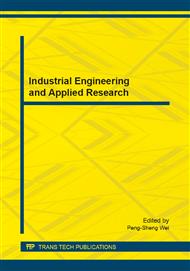[1]
A. Ronen, I. Etsion, Y. Kligerman, Friction-reducing surface-texturing in reciprocating automotive components, STLE Tribology Transactions, 44 (2001) 359-366.
DOI: 10.1080/10402000108982468
Google Scholar
[2]
G. Ryk, Y. Kligerman, I. Etsion, Experimental investigation of laser surface texturing for reciprocating automotive components, STLE Tribology Transactions, 45 (2001) 444-449.
DOI: 10.1080/10402000208982572
Google Scholar
[3]
YH Fu, YX Ye, YK Zhang, L. Cai, Technology of laser honing applied in distinctively improving the lubrication of frictional units. Chinese Journal of Mechanical Engineering 38 (2002) 115–7.
DOI: 10.3901/jme.2002.08.115
Google Scholar
[4]
N. W. Bolander, F. Sadeghi, G. R. Gerber, Piston ring friction reduction through surface modification, ASME Internal Combustion Engine Division Fall Technical Conference September 11-14, 2005, Ottawa, Canada.
DOI: 10.1115/icef2005-1346
Google Scholar
[5]
R. Takata, Y. Li, V. W. Wong, Effect of liner surface texturing on ring/liner friction in largebore IC engines, ASME Internal Combustion Engine Division Fall Technical Conference November 5-8, 2006, Sacramento, California, USA.
DOI: 10.1115/icef2006-1525
Google Scholar
[6]
YK. Zhou , H. Zhu , W. Tang , CB. Ma, WQ. Zhang, Development of the theoretical model for the optimal design of surface texturing on cylinder liner, Tribology International, 52 (2012) 1-6.
DOI: 10.1016/j.triboint.2011.12.017
Google Scholar
[7]
BF. Yin, XD. Li, YH. Fu, W. Yun, Effect of laser textured dimples on the lubrication performance of cylinder liner in diesel engine, Lubrication Science, 24 (2012) 293–312.
DOI: 10.1002/ls.1185
Google Scholar
[8]
N. Patir, HS. Cheng, An average flow model for determining effects of three-dimensional roughness on partial hydrodynamic lubrication. Trans. of ASME, 100 (1978) 12-17.
DOI: 10.1115/1.3453103
Google Scholar
[9]
N. Patir, HS. Cheng, Application of average flow model to lubrication between rough sliding surfaces. Trans. of ASME, 101 (1979) 220-230.
DOI: 10.1115/1.3453330
Google Scholar
[10]
J.A. Greenwood, J. H Tripp, The contact of two nominally flat rough surfaces. Proc. Inst. Mech. Engrs. 185 (1970) 48-71.
Google Scholar
[11]
E. Tomanik, Modelling the hydrodynamic support of cylinder bore and piston rings with laser textured surfaces, Tribology International 59 (2013) 90–96.
DOI: 10.1016/j.triboint.2012.01.016
Google Scholar
[12]
F.J. Profito, D. Zachariadis, E. Tomanik, One dimensional mixed lubrication regime model for textured piston rings. Proceedings of 21st Brazilian Congress of Mechanical Engineering 2011 (COBEM 2011).
Google Scholar
[13]
J. Frene, D. Nicolas, B. Degueurce, D. Berthe, M. Godet, Hydrodynamic lubrication: bearings and thrust bearings. Amsterdam: Elsevier Science; (1997).
Google Scholar
[14]
YR Jeng, Theoretical analysis of piston-ring lubrication part I: Fully flooded lubrication, Tribol. Trans. 35 (1992) 696-706.
DOI: 10.1080/10402009208982174
Google Scholar


